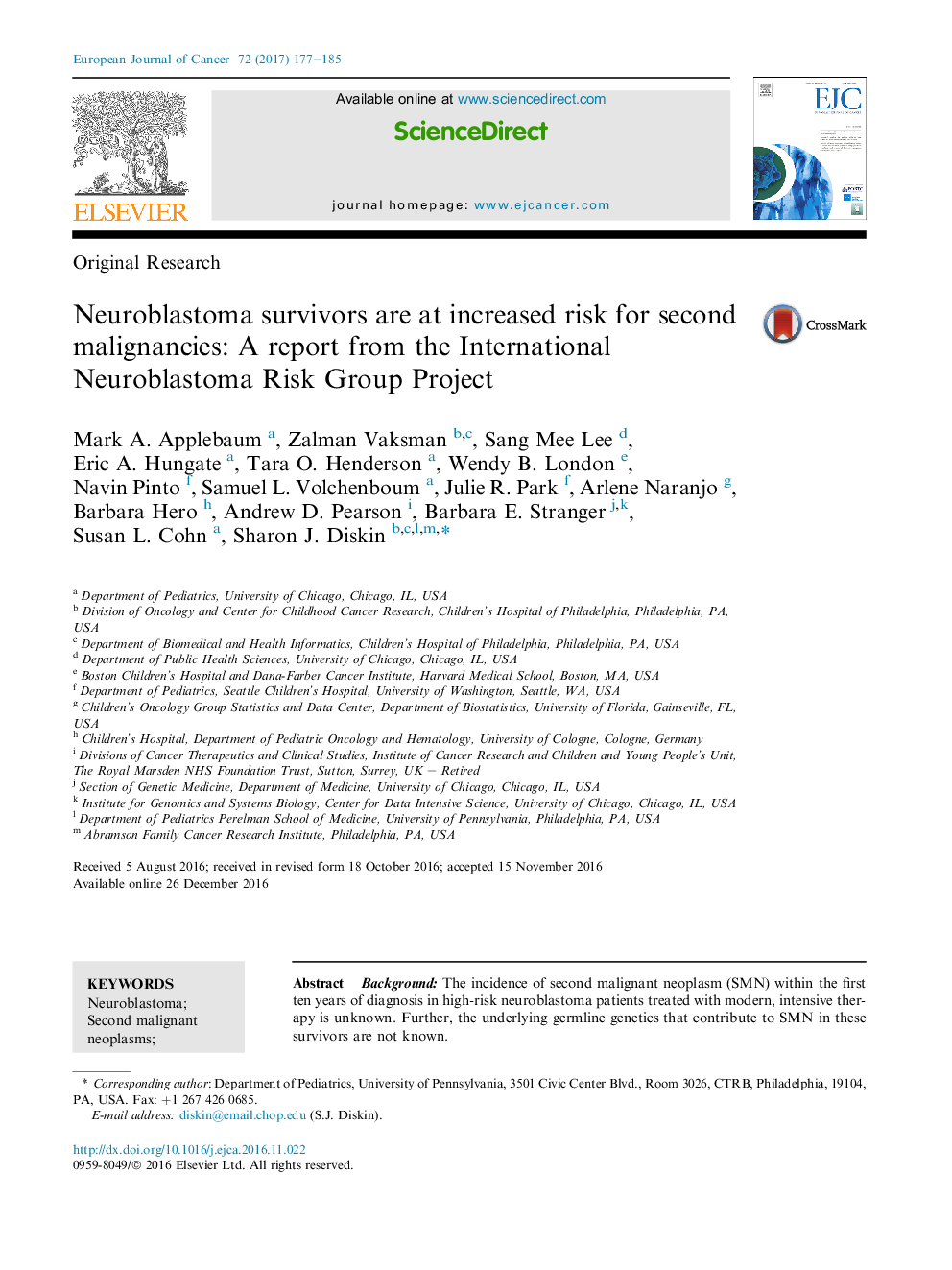| کد مقاله | کد نشریه | سال انتشار | مقاله انگلیسی | نسخه تمام متن |
|---|---|---|---|---|
| 5526322 | 1547060 | 2017 | 9 صفحه PDF | دانلود رایگان |

- High-risk neuroblastoma survivors are at 17.5-fold greater risk of second cancers.
- There is a high prevalence of secondary leukaemia in neuroblastoma survivors.
- Variants in DNA repair genes are most closely associated with second malignancies.
BackgroundThe incidence of second malignant neoplasm (SMN) within the first ten years of diagnosis in high-risk neuroblastoma patients treated with modern, intensive therapy is unknown. Further, the underlying germline genetics that contribute to SMN in these survivors are not known.MethodsThe International Neuroblastoma Risk Group (INRG) database of patients diagnosed from 1990 to 2010 was analysed. SMN risk was accessed by cumulative incidence, standardised incidence ratios (SIRs) and absolute excess risk. A candidate gene-based association study evaluated genetic susceptibility to SMN in neuroblastoma survivors.ResultsOf the 5987 patients in the INRG database with SMN data enrolled in a clinical trial, 43 (0.72%) developed a SMN. The 10-year cumulative incidence of SMN for high-risk patients was 1.8% (95% confidence interval [CI] 1.0-2.6%) compared with 0.38% (95% CI: 0.22-0.94%) for low-risk patients (P = 0.01). High-risk patients had an almost 18-fold higher incidence of SMN compared to age- and sex-matched controls (SIR = 17.5 (95% CI: 11.4-25.3), absolute excess risk = 27.6). For patients treated on high- and intermediate-risk clinical trials, the SIR of acute myelogenous leukaemia was 106.8 (95% CI: 28.7-273.4) and 127.7 (95%CI: 25.7-373.3), respectively. Variants implicating DNA repair genes XRCC3 (rs861539: P = 0.006; odds ratio: 2.04, 95%CI: 1.19-3.46) and MSH2 (rs17036651: P = 0.009; odds ratio: 0.26, 95% CI: 0.08-0.81) were associated with SMN.ConclusionThe intensive multi-modality treatment strategy currently used to treat high-risk neuroblastoma is associated with a significantly increased risk of secondary acute myelogenous leukaemia. Defining the interactions of treatment exposures and genetic factors that promote the development of SMN is critical for optimising survivorship care.
Journal: European Journal of Cancer - Volume 72, February 2017, Pages 177-185